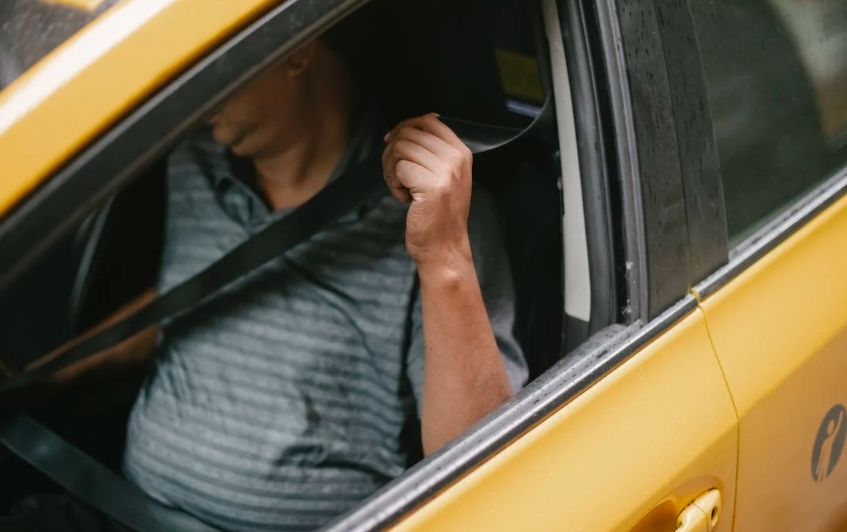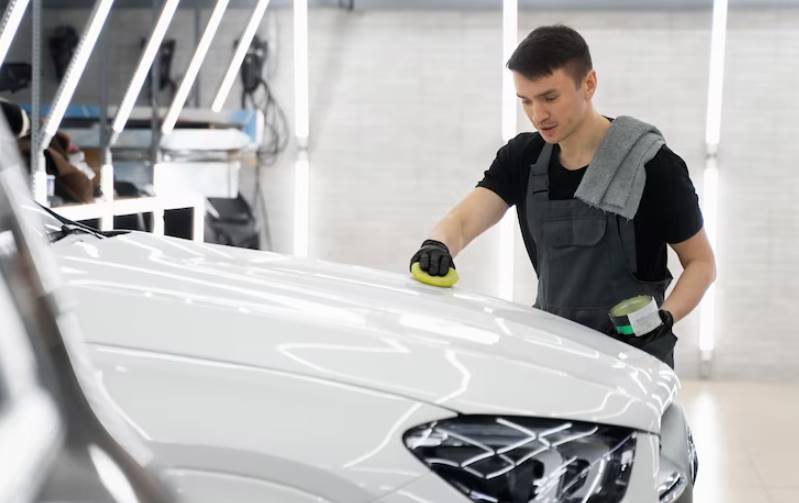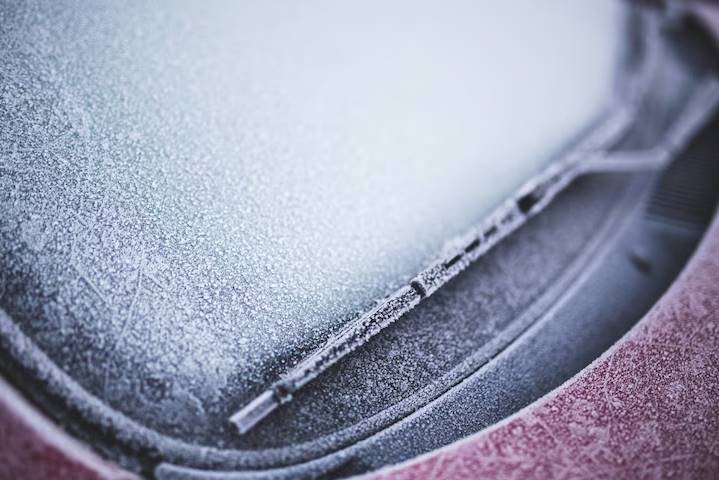Driving a car is a great responsibility and requires knowledge about safety and security. Car safety is essential for the safety of the driver, passengers and other road users, as well as for the security of the car itself. This article will provide essential car safety and security tips to help you stay safe on the road.
This article will cover topics such as vehicle maintenance, defensive driving techniques, emergency preparedness, and other security measures. Vehicle maintenance is essential to ensure your car is in good working condition. Defensive driving techniques can help you avoid dangerous situations on the road. Emergency preparedness is important in case of a breakdown or other emergency. Finally, security measures such as anti-theft systems and tracking devices can help protect your car from theft or vandalism.
By following these car safety and security tips, you can ensure that you and your car are safe while on the road.

Car Maintenance Tips
Regular Car Maintenance to Avoid Breakdowns
Regular car maintenance is essential to ensuring that your vehicle is running properly, and it also helps to avoid potential breakdowns. Regular car maintenance includes checking the oil level, tire pressure, fluid levels, brakes, and even warning lights on the dashboard. Regular maintenance also includes changing the oil and filters, checking belts, and inspecting the vehicle’s interior and exterior. Additionally, regular maintenance can help to identify any potential issues before they become larger and more expensive to repair.
Importance of Checking Tire Pressure, Oil Level, and Brakes
Checking tire pressure, oil level, and brakes are three of the most important aspects of regular car maintenance. Tire pressure helps to ensure that your tires are inflated properly, which helps to maximize your gas mileage and ensure that your tires wear evenly. Low oil levels can cause major engine damage, so it is important to check the oil level regularly and top off as needed. Finally, brakes play a critical role in keeping you safe on the road, so it is important to check them regularly to ensure that they are functioning properly.
How to Check for Warning Lights on the Dashboard
Warning lights on the dashboard often indicate a potential problem with the vehicle. It is important to check for warning lights at least once a month, or more frequently if you are driving often. If you notice any warning lights on the dashboard, it is important to take it to a mechanic right away to have it checked out. Additionally, you should look into the warning lights and become familiar with them so that you can understand what they mean and act quickly if needed.
Tips for Choosing a Reliable Mechanic
When choosing a reliable mechanic, it is important to do your research. Ask friends and family for recommendations, and read online reviews to get an idea of the quality of service a mechanic provides. Additionally, you should look for a mechanic that is certified and experienced, and make sure they are familiar with the make and model of your vehicle. Finally, make sure to get multiple estimates from different mechanics and compare them before making a decision.
Driving Techniques
Tips for Safe Driving in Different Weather Conditions
•In general, it is important to slow down and increase the distance between your vehicle and the vehicle in front of you when driving in adverse weather conditions.
•In rain, drive with your lights on and use your windshield wipers. Make sure to check your tires for proper tread and tire pressure.
•In snow, use extra caution and slow down. Avoid using cruise control and do not use brakes suddenly. Increase the distance between you and other vehicles on the road.
•In ice, reduce your speed significantly and avoid sudden acceleration, braking, and turning. Increase the distance between you and other vehicles on the road.
•In fog, use your headlights and fog lights and drive slow. This will increase visibility and reduce the risk of accidents.
•In high winds, use extra caution as strong winds can cause your vehicle to drift. Avoid strong gusts of wind and be alert to other vehicles on the road.
•In dust storms, slow down and pull off the roadway when possible. When driving in dust storms, it is important to use your low-beam headlights and turn off your cruise control.
Defensive Driving Techniques to Avoid Accidents
•Be aware of your surroundings. Always scan the entire driving environment, including the road ahead, sides, and rear of your vehicle.
•Be aware of road conditions and adjust your speed accordingly.
•Maintain a safe following distance. This means leaving enough space between you and the vehicle in front of you to be able to stop if needed.
•Always use your turn signals to let other drivers know when you are turning or changing lanes.
•Avoid aggressive driving, such as tailgating, speeding, and weaving in and out of traffic.
•Be aware of other drivers. Do not assume that other drivers will obey the rules of the road.
•Always obey the speed limit and traffic laws.
•Never drive under the influence of drugs or alcohol.
How to Avoid Distractions While Driving
•Turn off or silence your cell phone.
•Do not eat or drink while driving.
•Avoid engaging in conversations with other passengers.
•Do not adjust the radio or any other controls while driving.
•Do not read or write while driving.
•Do not apply makeup or do other grooming tasks while driving.
•Do not use GPS or other navigation systems while driving.
•Do not turn around to look at passengers in the back seat.
•Do not reach for objects that have fallen off the seat or floor.
•Do not text or use any other electronic devices while driving.
Tips for Driving at Night
•Make sure your headlights, taillights, and turn signals are all working properly.
•Be aware of other drivers. Always use your turn signals to let other drivers know when you are turning or changing lanes.
•Reduce your speed. It is harder to see at night, so it is important to reduce your speed.
•Be aware of animals. Animals are more active at night and can be difficult to see.
•Watch for pedestrians. Pedestrians can be difficult to see at night and can easily be overlooked.
•Keep your distance from other vehicles. It is important to maintain a safe distance between you and other vehicles on the road.
•Avoid using cruise control. Cruise control can be dangerous at night, as it can make it harder to react to changing road conditions.
•Increase the distance between you and other vehicles on the road. This will help reduce the risk of accidents.
Emergency Situations
What to do in case of a breakdown or flat tire
If you experience a breakdown or flat tire, it is important to stay calm and assess the situation. The first thing you should do is move your car safely off the road, if possible. Once you have done so, you should call for help. If you are a member of a roadside assistance program, you should call them first. If not, you can call a tow truck or a local mechanic. It is important to stay with your vehicle while you wait for help, as it is not safe to leave it unattended. You should also make sure to have a spare tire and tools to change it, as well as a flashlight, flares, and other emergency supplies.
How to handle a car accident
The first thing to do when in a car accident is to remain calm. If you are able to do so, you should check to see if anyone is injured. If anyone is injured, you should seek medical attention immediately. Once the safety of everyone involved is ensured, you should exchange contact and insurance information with the other driver(s). You should also take photos of the scene of the accident for your records. Finally, you should contact the police and file a report.
What to do if your car is stolen
If your car is stolen, the first thing you should do is remain calm and contact the police to file a report. You should also contact your insurance company to report the theft and inform them of any available details. You should also take steps to protect your identity, such as canceling credit cards or changing passwords if necessary. Additionally, you should contact any friends or family members who may have had access to your car and ask them to keep an eye out for it.
Car Security Tips
How to protect your car from theft
a. Install a car alarm system: One of the best ways to protect your car from theft is to install a reliable car alarm system. Car alarm systems come with a variety of features and options, such as motion sensors, remote start, shock sensors, and even a GPS tracking system. Depending on the type of car alarm system you choose, it can be triggered by a variety of factors, from someone attempting to break into your car to a loud noise or vibration.
b. Lock your doors: One of the simplest ways to protect your car from theft is to always make sure your doors are locked. While it may seem like a small step, it can be the difference between a thief being able to get into your car or not. Be sure to also double check that all of your windows are closed and locked when you leave your car.
c. Park in a secure location: When parking your car, try to choose a location that is well-lit and visible to passersby. Avoid parking in secluded or dark areas, and look for parking spots that are close to traffic or people.
d. Hide all valuables: If you have any items of value in your car, be sure to hide them out of sight, such as in the trunk or in a glove compartment. If you must leave something in the car, hide it under the seat or in the glove compartment and make sure it is locked.
Tips for choosing the right car alarm system
a. Research different types of car alarms: Before buying a car alarm system, it’s important to research the different types available, as well as their features and benefits. Consider the features and options that best fit your needs and budget, and compare prices and reviews of different car alarm systems to find the right one for your car.
b. Check for compatibility: Make sure to check that the car alarm system you choose is compatible with your car’s make and model. Many car alarm systems come with specific instructions on how to install and use them, so be sure to read the instructions and follow them carefully.
c. Consider installation: Depending on the type of car alarm system you choose, you may need to have it professionally installed. If you choose a wireless car alarm system, you may be able to install it yourself, but it’s important to make sure that you understand the instructions and follow them carefully.
How to secure your car when parking in public places
a. Park in well-lit areas: When parking your car in public places, it is important to choose a parking spot that is well-lit and visible to passersby. This will help to deter thieves, as well as help to make it easier for you to spot a suspicious person or vehicle.
b. Be aware of your surroundings: Always be aware of your surroundings when parking your car in public places. Look around for any suspicious people or vehicles, and be sure to lock your doors and close your windows before leaving your car.
c. Use a steering wheel lock: A steering wheel lock is an effective way to deter thieves from stealing your car. It is a metal device that fits over your steering wheel and is designed to make it difficult for thieves to get access to the car.

What to do if you suspect someone is following you
a. Call the police: If you suspect someone is following you, it is important to call the police right away. Do not try to confront the person, as this could be dangerous. Instead, provide the police with as much information as possible, such as the person’s description and the direction they were heading.
b. Drive to a safe location: If you are able to, drive to a safe location, such as a police station or a crowded area. Make sure to keep your doors locked and your windows closed, and be prepared to call the police again if necessary.
c. Stay alert and take precautions: Once you have arrived at your destination, stay alert and take precautions. Look for any suspicious people or vehicles, and make sure to keep your doors locked and your windows closed. It is also a good idea to avoid parking in secluded or dark areas, and to be aware of your surroundings at all times.
Conclusion
Drive safe and be mindful of the risks that come with driving. Make sure to keep your car regularly serviced and inspected to ensure that it is running in peak condition. Be aware of the weather conditions before setting off and adjust your driving style accordingly. Always wear your seatbelt and never use a cell phone while driving. Respect the speed limits and never drink and drive. Utilize defensive driving techniques and be aware of your surroundings at all times. If you ever find yourself in an emergency situation, make sure to pull over in a safe spot, call for help and wait for it to arrive.
By following these essential car safety and security tips, you can be sure that you will have a safe journey and arrive at your destination safely. Remember, your safety is worth more than anything else. Drive safe and enjoy the journey!
FAQs
1. What are the essential car safety and security tips?
The essential car safety and security tips are: always wear your seatbelt, keep your vehicle in good condition, maintain a safe following distance, check your car’s tire pressure regularly, keep your headlights in working order, stay alert and avoid distractions while driving, practice defensive driving, and secure your vehicle when it is parked.
2. What do I need to do to maintain a safe following distance?
The safe following distance to maintain is dependent on your speed and the speed of the vehicle in front of you. Generally, it is best to maintain at least a two-second gap between your car and the car in front of you. This gap gives you more time to react in case of an emergency.
3. How often should I check my car’s tire pressure?
It is recommended that you check your car’s tire pressure at least once a month. This will help ensure that the tires have the correct air pressure and are in good condition.
4. What is defensive driving?
Defensive driving is a method of driving that helps you avoid dangerous situations. It involves being aware of your surroundings and other drivers on the road, anticipating potential hazards, and taking appropriate action to avoid them.
5. What should I do to secure my vehicle when it is parked?
When parking your vehicle, it is important to take steps to make sure it is secure. You should always park in well-lit areas, lock all doors and windows, and keep valuables out of sight. Additionally, you may want to consider investing in an anti-theft device for added security.
6. How can I stay alert and avoid distractions while driving?
To stay alert and avoid distractions while driving, you should limit your conversations with passengers and turn off any electronic devices such as your cell phone. Additionally, you should be sure to take regular breaks when driving long distances.
7. What should I do if I’m involved in a car accident?
If you are involved in a car accident, the first thing you should do is pull over to a safe area and check for any injuries. Then, contact the police and exchange insurance information with the other driver. Finally, make sure to document the accident with pictures and witness statements.
8. What should I do if my car breaks down?
If your car breaks down, the first thing you should do is pull over to a safe area. Then, contact a tow truck service or roadside assistance service and wait for them to arrive. Additionally, you should make sure to keep emergency supplies in your car in case of a breakdown.
9. What should I do if my car is stolen?
If your car is stolen, the first thing you should do is contact the police and file a report. Then, contact your insurance company to make a claim. Finally, you should make sure to keep a record of all communication with the police and insurance company.
10. What can I do to keep my headlights in working order?
To keep your headlights in working order, you should regularly check and clean the lenses. You should also check the wiring and connections to make sure everything is in good condition. Additionally, you may want to consider investing in LED headlights for added visibility and safety.


















